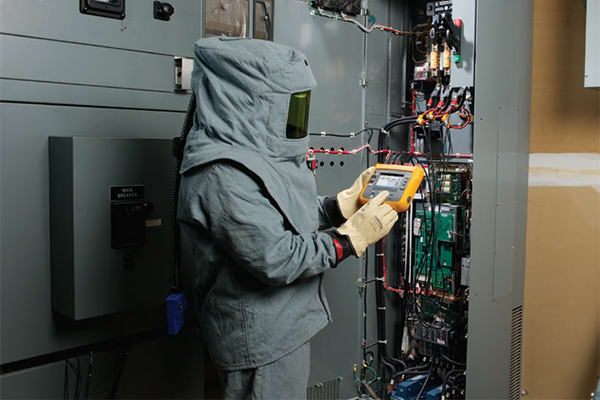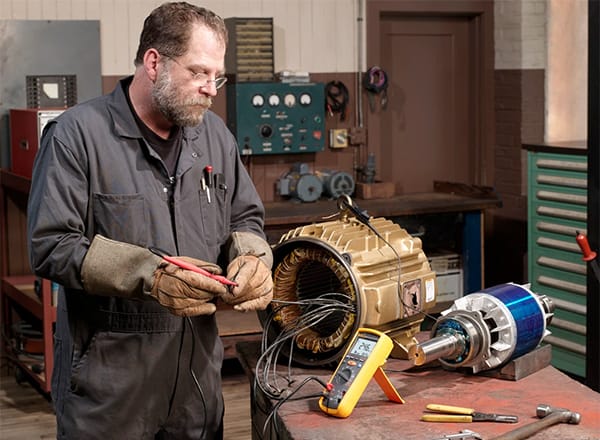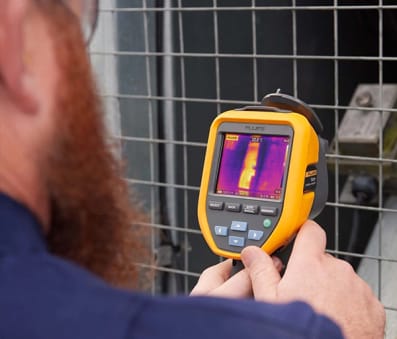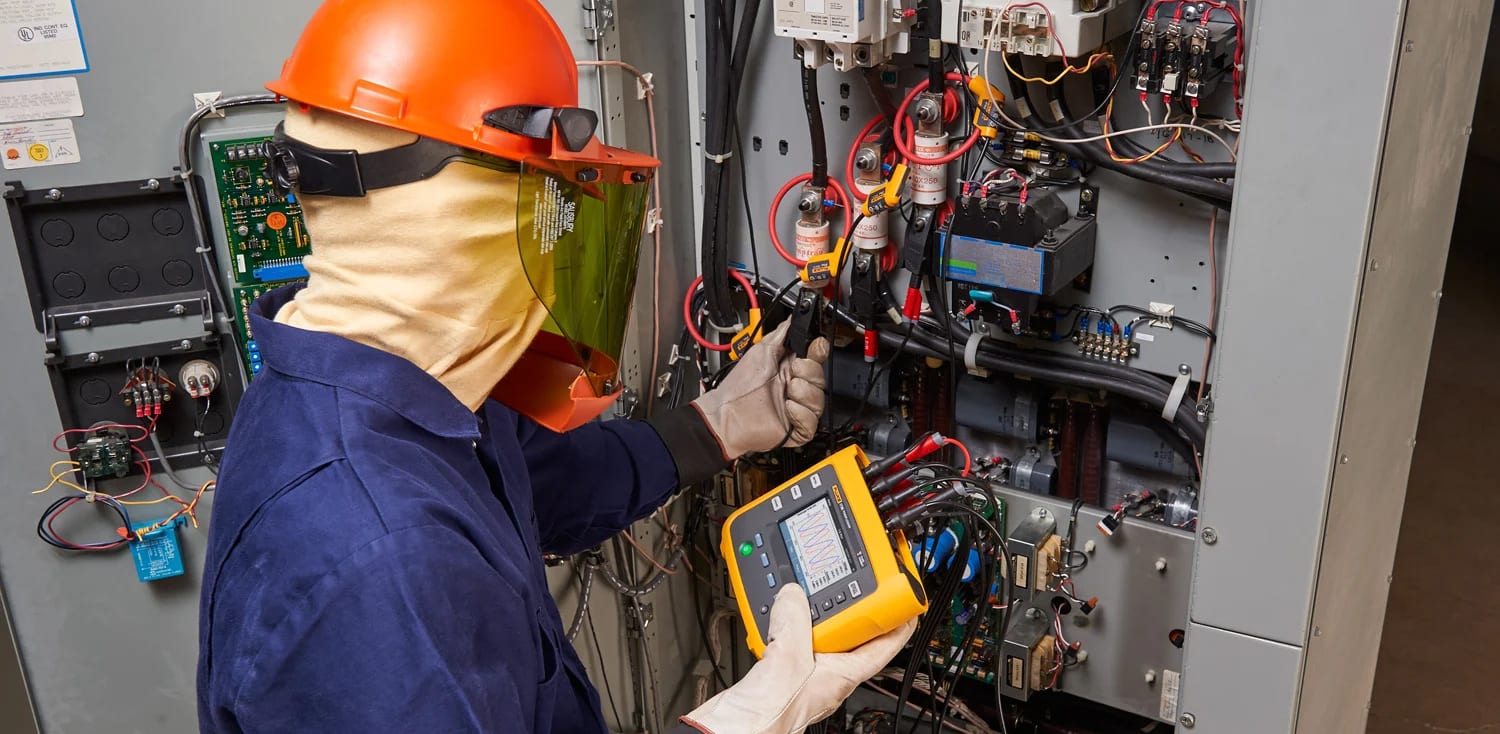How diagnostic tools and equipment are a useful component of every facility team’s tool kit.

Sean Silvey
Product Application Specialist, Fluke Corporation
RS’s “Ask The Expert” series taps into the experience and expertise of key thought leaders and subject matter experts from the more than 500 global suppliers we work closely with to bring customers solutions for their most challenging problems (and the daily ones, too).
Today’s industrial facilities rely heavily on equipment and systems that often run continuously, in sensitive environments. The health of equipment and systems – inside the cabinets and beyond – are more important than ever in an age where automation is most prevalent. Staying apprised of such health is aided by accurate, reliable, and suitable diagnostic tools and equipment that helps technicians measure everything from temperature, pressure, voltage, ground faults, loose connections, and erratic voltage. Having such tools and equipment is a smart strategy that pays dividends.
To probe further into the use of tools and equipment in maintaining high-performing facilities, we spoke to Sean Silvey, a product application specialist, with Fluke Corporation, a manufacturer of precision diagnostic tools and instruments used for facilities management.
Their product line is broad and deep and includes complex multimeters, infrared thermography cameras, ultrasonic leak detectors, devices to measure temperature, and many other items to help today’s facility manager identify problems before they occur. They also work ardently with software, such as Fluke Connect, to upload field data to the cloud allowing maintenance and operations engineers to view data remotely, wherever they are located.

Energy logging meter

Insulation resistance testing
Think Power
“At the forefront of tools that are useful are power logging meters,” says Silvey. “It’s a great one because you can go out and do load analysis on the site and see if anything’s tripping or if there’s enough capacity to add new equipment to your plant. It’s important to perform a load analysis to determine if this distribution panel can handle the additional load. Or by contrast if we’re maxed out and we need to add it elsewhere besides this location.”
Silvey also recommends a power analyzer. It is a tool that measures, voltage, current, and their wave harmonics and logs it over time to allow one to analyze electrical behavior at a detailed level. “It’s a great tool to be set up on either single phase, split phase, or a three-phase system,” he says. “You connect it, you set it up for a 30-day log and monitor it to see where the power draw is being pulled from, which legs of power you’re drawing current from, and what the voltage looks like as well.” Subsequently this can help drive decisions in troubleshooting machinery and installing it in the proper place and circuit.
In addition, Silvey advises having a robust program of insulation resistance testing using an insulation tester device that accurately allows the gathering of such data. This means testing the integrity of insulation of motor windings and other cable and conduit to determine if it is adequately insulated or is breaking down to a point that could put it in the danger zone. Performing insulation resistance testing at a reasonable frequency is a sound practice and having accurate and suitable tools to the application are key.
Think Heat
Another versatile tool that can be used for many applications is a thermal imaging camera or device. Using infrared thermography, it senses heat and displays it visually so one can see “hot spots” or irregularities that may signal danger or harm. They can be used to find loose connections in switchboards and power panels. Loose connections will show up as hot spots.
Infrared devices can also be used to detect anomalies in motor or machine bearings that are running hot as well.
“A thermal imager is great for routine maintenance because they’re going to be able to go around and validate if there’s anything hot or if anything’s heating up too much,” says Silvey. “This is a good preventative maintenance tool because it allows you to perform some signature analysis on key components. Whether it’s a motor or a compressor and take a thermal image shot as part of your routine maintenance. Then use it as baseline data, so you can watch for any increase in heat over time. This would indicate that a connection or other mechanical part may be approaching failure or otherwise require some corrective maintenance.”
Think Data

Thermal imaging
Silvey adds that with Fluke instruments, users can upload data from devices via Bluetooth technology and their smart phone to a cloud platform, like Fluke Connect, where it may be further processed and analyzed in a dashboard or other interface. This allows data patterns to be observed. It provides useful information that maintenance may need to be performed or replacement is warranted.
“Fluke Connect offers a great platform to bring this information together,” says Silvey. “Then you may report it. Maintenance technicians perform their tasks and then other managers, or engineers may review this information and send it to another level. It allows the user to see a motor that’s going to fail and get one ordered or be ready for that if it goes down.”
The ability to gather information and upload it is crucial, as more industrial plants are engaging Industry 4.0. Data is gathered manually or via remote sensing. Data is uploaded to a software algorithm that tracks data over time and presents any anomalies or warning signs. Using instruments and devices, such as those offered by Fluke, helps this effort and syncs perfectly into the automation age of Industry 4.0 and the IoT prevalence at many industrial facilities.

Fluke Connect
The Right Tools for the Right Application
While there are numerous uses and applications for diagnostic tools and equipment, Sean Silvey is emphatic about using tools safely. This means using tools that are not outdated and are suited to a specific application. He cites an example of an offshore drilling platform where a technician was knocked over when using a meter that was not appropriate for the application being measured.
In addition to safety, he emphasizes the use of regular training of personnel. He touts the Fluke website as an excellent source and encourages in-person training sessions where possible. There’s much to know about an instrument and how to use it properly to gain the most advantage from it.
Today’s facilities managers have a full plate. There’s a low margin of error for unreliable machinery. Proper maintenance and a disciplined maintenance schedule are imperative in today’s industrial environment. Having the best, most accurate, and fitting diagnostic tools and measuring equipment is a sound and smart practice for every facility manager to abide by.
Additional Links:






